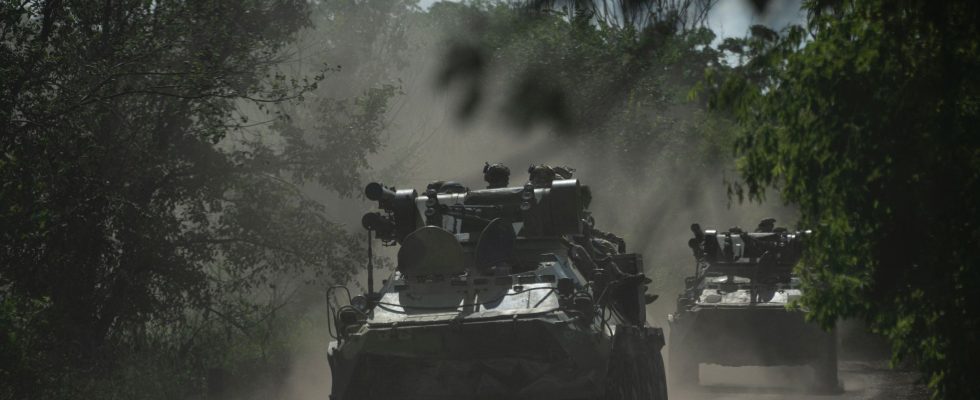It was September 2022, lines of vehicles stretched for tens of kilometers on the border between Russia and Kazakhstan. Thousands of Russians rushed to Central Asia to escape the partial mobilization in Ukraine. It is by this same route that the citizens of these “refuge countries” go to Russia every year to find work, even in times of war: in the first quarter of 2023, they were still almost 2 million to travel from Uzbekistan, Tajikistan, Kyrgyzstan and Kazakhstan according to federal statistics.
“Russia has been welcoming Central Asian migrant workers for more than 20 years. This population, poorly paid and exploited, contributed enormously to the economic growth of the country before the war”, explains Yan Matusevitch, researcher at the City University of New York, and subject specialist. According to experts, the nearly 10 million Central Asians present in Russia would contribute up to 8 to 10% of Russian GDP, while in 2022 alone, the city of Moscow harvested 30 billion rubles in taxes (more than 300 million euros) from Central Asian workers, according to Russian economic sources.
Seen from Central Asia, Russia is perceived as an “eldorado” where one can more easily find work and save for one’s family. Money transfers from Russia represented thus around 30% of the GDP of Tajikistan and Kyrgyzstan last year. “This phenomenon is a real safety net for Central Asian countries,” explains Erica Marat, professor of international relations at the National Defense University in Washington DC.
But since the mobilization decreed in September 2022, even if many of them still go to Russia, the numbers have dropped significantly, and many are choosing to leave Russia or not to return. “In Kyrgyzstan and Uzbekistan, we are seeing a gradual return of migrants, especially among those who have obtained a Russian passport, and who are turning to other countries to work, observes Yan Matusevitch, as in the United Kingdom, very affected by the lack of labor since Brexit, in Poland, Turkey, South Korea or even in the Gulf countries”.
Humiliating identity checks
Mostly employed on construction sites or in service companies, these migrants have a growing influence in a Russia in full demographic decline, according to Erica Marat. “If they leave, sooner or later the service economy in Russia will collapse,” she predicts. Despite this, they are far from being welcomed with open arms by Russian society and its institutions, in a country where “being non-Slavic is disabling” according to the specialist.
Since June 19, and the beginning of the annual operation to fight illegal immigration, the police have been cracking down in all the major cities of Russia. Of the videos on social networks show them lined up in a row or lying on the ground on their stomachs facing armed police, and who can stay for long minutes in these conditions before the police carry out a humiliating identity check, that whether they are in an irregular situation or not. “You are never really ‘legally’ in Russia when you are a migrant, even if you have all the required papers”, supports Erica Marat.
Some public figures denounce these foreigners who would take advantage of the difficult economic situation in Russia. A member of the Duma thus stigmatized on May 6, the Tajik community in Russia: “Where are the battalions of Tajiks? […] Russians who die in Ukraine are replaced here by hundreds of thousands of Asians! »
Thousands of cries for help
If the nationalists point the finger at their migrants, the authorities have realized that they remain, both economically and militarily, very useful: since the start of the war, they have been targeted by recruiters to fill the ranks in Ukraine.
It is not known exactly how many were recruited, but 93 Central Asian citizens were found dead on the front lines according to the BBCdated June 14, and those still in Russia are under daily pressure to enlist. Valentina Tchoupik, a lawyer for migrant rights in Russia, receives some 1,400 requests daily from migrants in distress who are about to enlist in the army. She says she has helped at least 2,000 since the start of the war. “Most often in the migration centers they are given a huge pile of documents to sign without letting them read, including the voluntary military service contract. Then they are simply taken to the military unit,” says Valentina Tchoupik .
Stranded in Ukraine
Building workers are also in great demand to go and rebuild annexed towns, such as Bakhmout, Mariupol, Loughansk, or Avdivka. And as there is no shortage of Central Asian migrants on Russian construction sites, they get hired with the promise of being paid between 70,000 and 80,000 rubles (or between 740 and 850 euros) per month.
On the spot, the disappointment is twofold: not only do they receive a pay three times lower than the amount promised, but at the end of their mission, they are forbidden to return to Russia. “They end up stranded in Ukraine, with money that they cannot use because it has been transferred to their Mir bank card, which can only be used in Russia”, specifies Valentina Tchoupik, who is in contact with around forty people in that case.
The embassies supposed to be responsible for their nationals on the spot do not dare to react, because they do not want to fall out with Moscow, the privileged partner of the former Soviet republics. Left behind, with practically no organization that protects the rights of these migrants on the spot, “the situation of the latter can only worsen in a destroyed Russian society”, sighs Erica Marat. And the bogging down of Russia in the war in Ukraine is not likely to help their situation.
